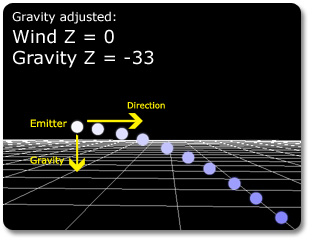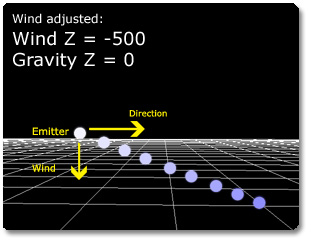Particle Setting
-
Diffuse - You can change the color or image for each particle.
-
Opacity - This parameter decides the shape and the transparency of your particles.
-
Please refer to Multiple Channel Texture Mapping for more details.
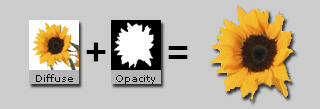
The three radio buttons in this group define how the particles are to be blended with the background.
-
Alpha - You may see the original color of the image for each particle.
-
Addition - The RGB color of the image for each particle will be added onto the color of the background. This parameter is useful especially when you want to create glowing particles in your projects.
-
Subtraction - The RGB color of the image for each particle will be subtracted from the color of the background.
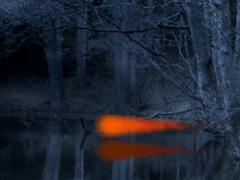
Alpha

Addition

Subtraction
Particle Key
iClone provides each particle with four keys for the duration of its life. Every particle key stores the Color, Opacity and Size data, which will allow you to create Fade In/Fade Out effect for individual particles.
-
Click one of the four keys to change the Color, Opacity, and Size data in the key.
-
You may drag the middle two keys to re-define the timings of these two keys during the particle's life.
-
Color - Define a color to be blended with the image you load for the particles when they are generated/eliminated.
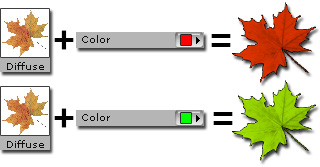
-
Opacity - Set the level for each particles to be transparent as it is generated/eliminated. Set 0 to make it totally transparent and 255 for opaque.
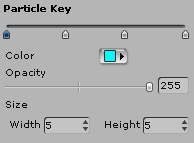
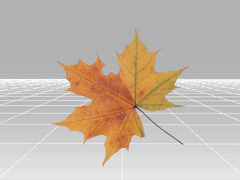
Opacity = 255 |
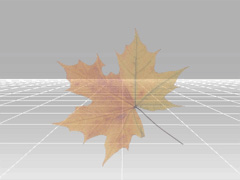
Opacity = 127 |
The size of each particle can be modified via the settings in this group so it transforms gradually and linearly within its life span.
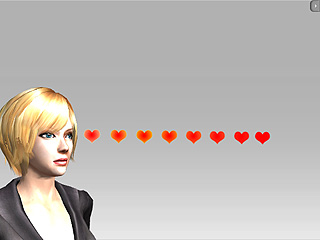
(10x10) → (10x10) → (10x10) → (10x10) |

(10x10) → (50x50) → (20x20) → (80x80) |
The particles rotate as long as you modify the settings in this group.
-
Initial Angle - By setting the value in this box, each particle tilts clockwise in the angle of this value as being generated. The range is from 0 to 359 degrees.
Angular Velocity - These settings keep each particle rotating individually in different velocity. You may set the range from 359 degrees to 359 degrees. A positive/negative number constrains the particles to rotate clockwise/counterclockwise. The larger the number is, the faster the particles rotate.
The relationship of the Min and the Max follows the formula:
Min <= Max.
Softness Strength
Drag the slider to decrease the seams as the particles intersect with other objects in the scene, which improves the realism of the particles.
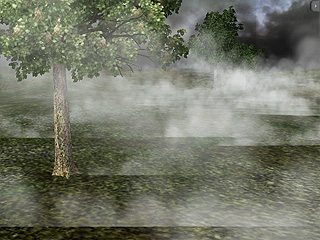
|
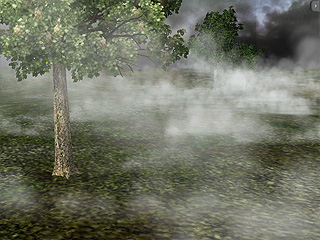
|
|
Softness Strength = 0 |
Softness Strength = 100 (Seamless) |
Face to
Basically, each particle is a matted billboard that will be facing the current camera all the time. However, if you want the camera to view above or beneath the particle, you will need the Face to feature to get desired result.
-
Face Cam: This option is suitable for non-directional particles such as fire, fog or storm.
-
Vertical: This option aligns the particles to the Y axis, which is suitable for vertically directional particles such as raindrops.
-
Horizontal: This option aligns the particles to the floor, which is suitable for horizontally directional particles such as ripples.
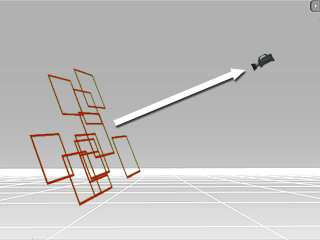
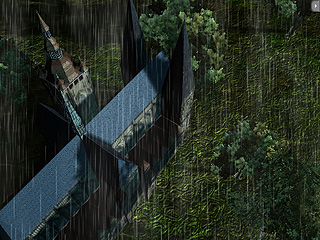
|
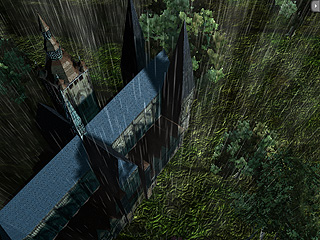
|
|
Face Cam |
Vertical |
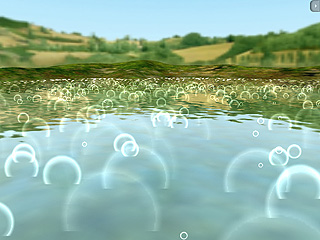
|
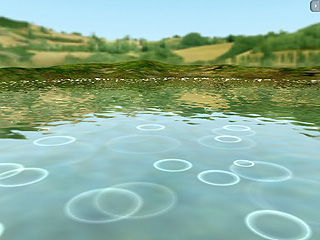
|
|
Face Cam |
Horizontal |
The parameters define how long each particle lives. You can make your particles disappear at random ages from Min to Max frames.
-
Min - The least number of frames for each particle to live. The value can be set from 0 to Max.
-
Max - The highest number of frames for each particle to live. The value can be set from Min to 99999.

